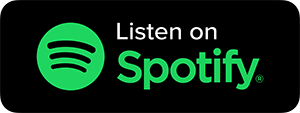
Aiming to Attract the Best Candidates? Consider the Pub
When Ed Ross started recruiting talent for tech companies in the early 2000s, he was tasked with sending applicants lengthy job specs. These specs contained the information companies thought candidates required—namely, a list of skills and requirements for the open position.
“It was so boring for them,” he told us. “It talked about Java and Java frameworks and databases, and nobody was interested in that.”
If these sorts of job adverts sound familiar, it’s because many companies still recruit this way—an impossibly long, boring list of skills and requirements.
Everything changed for Ed when he identified what candidates actually wanted. As the founder of ClearCube Consulting, he sourced top talent for companies like Amazon, Sky, and Expedia. He succeeded where others didn’t because he uncovered the secret that thousands of organizations around the world still haven’t learned: what candidates care about most.
Since his consultancy days, Ed’s been scooped up by Skyscanner, a flight search engine and booking marketplace. He’s kept busy as the Senior Tech Talent Acquisition Manager there, but he took the time to teach us a thing or two about what candidates look for in a job description and how to recruit top engineering talent in a fiercely competitive market.
A great candidate experience is human first
As one of the pioneers of the candidate-centered approach to writing job descriptions, Ed has a lot of wisdom to share. His consulting company ClearCube focused on repositioning the notion of the conventional job description, sharing what candidates really wanted to know about a job. And it all started with Amazon.
Back when Amazon was doubling down on their London-based engineering teams, Ed was one of the lead recruiters tasked with sourcing talent. Six months into the job, his agency was one of the only companies left in the ring. Customer-obsessed Amazon had a very different culture than most other UK tech companies at the time, and they proved extremely difficult to hire for.
“As soon as the penny dropped, we realized that it was much less about looking for a specific type of person, and much more about making sure that when you did find someone who fit the Amazon mold, you provided them with the right information,” Ed said. That included details like what to expect from the interview process, and what their first six months on the job would be like.
Ed also took the business lessons of Amazon’s “Flywheel Effect” to heart and applied them to the recruitment process. Where the center of Amazon’s flywheel is customer obsession, Ed found himself obsessed with candidate experience.
Lengthy job specs became a thing of the past. Instead, Ed and his firm created one-pagers for each job they needed to fill. The first three-quarters of each page talked about company culture, the problems the company solved, and who they solved them with—all the information candidates needed to determine whether they even wanted a job in the first place.
The bottom quarter was all about the pub.
We’d really give them a flavor of what life was like there, and why they would or wouldn’t choose that place to go and work. We took the job spec and summarized it in a couple of lines. We gave them that idea of, if you went down to the pub on a Saturday with your friends and they said, ‘What’s your new job?’, that’s the kind of language you would use.
People immediately took to these relatable one-pagers, and Ed and his team saw a massive impact.
“It completely changed the way we worked as an agency,” he said. People opted out more quickly on jobs they would have rejected at the offer stage. For the first time, they didn’t need to go through the interview process to learn what they needed to know.
Candidates committed to fewer, more relevant interviews and found jobs more often. With a simpler process and less interview time, ClearCube had a higher success ratio placing candidates, and enterprise clients like Amazon were over the moon.
While the nature of employer branding is changing, those old-school job ads are still all too common. We still see more skill lists and job requirements than the kind of real-world information that might help candidates self-select out of the process.
When we asked Ed why, he suggested it was more about capacity than anything else. Talent acquisition teams aren’t immune to the push to do more with less. “Talent acquisition teams are already stretched to capacity. They haven’t got the impetus, the time, or the money to do it, and you have to do it for all of the platforms.”
Of course, time invested on the front end saves hours of wasted interviews on the back, and recruitment practices grow more candidate-focused as competition heats up. One such recruitment battlefield is in tech, where attracting high-quality engineering talent is highly competitive.
Aligning the company around defined standards
Engineer and web developer roles are some of the most popular on the UK market right now, and competition for engineers can be intense.
Skyscanner sets the bar high for engineering talent, so they’re competing with top international tech companies for engineers. As a tech-specific recruiter, Ed knows better than most how to build solid teams and attract the best talent in a wildly competitive market.
The advantage of hiring engineers, Ed says, is that you can apply standard, consistent assessments. Recruiters can also dictate to teams how recruitment workflows should look.
We have a really clearly defined Skyscanner bar. The key thing is to really understand and buy into what that bar is. You can’t do anything until you can do that. Because what we then do is almost use that as a selling point.
What could pose a challenge for the recruitment team—a high bar for talent—becomes an inherent positive for candidates looking to cut their teeth on a unique challenge. Ed is also quick to point out that he shows candidates behind the curtain of the interview process right away. Showing people exactly how they’ll be assessed—and why—is central to Skyscanner’s recruitment process, and it’s getting results. And to lure top engineers away, Ed left us with this…
Every company has a story, and that story is unique. From a TA perspective, you need to find the thread that’s going to excite people. For us, it’s about being user-first or working at the scale we do, being a global team. That’s something the right kind of engineer gets excited about.





